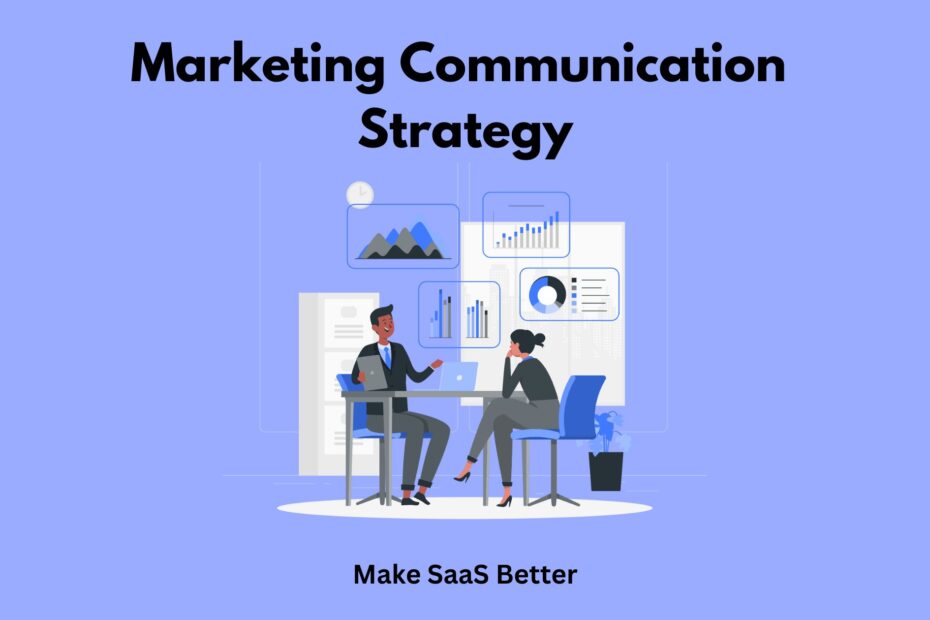Life moves fast. Businesses move faster. If you’re not cutting through the noise, you’re just adding to it. That’s why a focused marketing communication strategy is no longer just an option. It’s the only way to play. The truth? Your message needs to land. It needs to hit hard. And it needs to hit the right people.
Recent data points to this reality: 68% of customers are now more likely to buy from brands that offer convenient communication. Think about that. Convenience. Clarity.
Yet, almost 60% of marketing professionals admit poor communication is a major problem holding them back. It’s clear: what you say, how you say it, and where you say it matter more than ever. You can have the best product on earth, but if your message is lost in translation, or worse, never even heard, you’re just a secret. And secrets don’t make money.
What Is a Marketing Communication Strategy?
A marketing communication strategy is your game plan. Simple as that. It’s how a business talks to its customers about what it offers. Think of it as mapping out every message. Every single point where you touch someone. It’s not just about flashy ads. It’s about how your brand communicates across all channels. From your website. To a quick chat in the comments.
This plan ensures your value gets across. Clear. Loud. To the right people. It helps you tell your story. Not just any story. Your story. It’s the difference between being heard and being ignored. Between making an impact and just making noise.
Why Is Marketing Communication Strategy Important?
You have a great product. So what? If no one knows, or if they misunderstand, you’re dead in the water. A good marketing communication strategy fixes that. It helps you find your audience. It helps you understand what they need. And it shows you where to find them. When you tailor your message, it hits harder. Engagement goes up. Sales follow.
This isn’t just about talking. It’s about making sure your words do something. Companies that focus on collaboration, a core part of good communication, see more revenue. It’s a direct link. If you don’t talk clearly, you don’t connect. If you don’t connect, you don’t sell. Simple. This strategy isn’t a suggestion. It’s the engine that drives everything else.
How To Create an Effective Marketing Communication Strategy?
Building a solid marketing communication strategy isn’t magic. It’s a series of clear steps.
1. Define Your Audience
Who are you talking to? You need to know them inside and out. Their needs, their pain points, and where they hang out online and offline. Don’t guess. Research. This knowledge forms the bedrock of all your messaging. Without it, you’re shouting into the void.
2. Set Clear Goals
What do you want to achieve? More sales? More leads? Better brand awareness? Be specific. “Increase online brand mentions by 20% in the next three months” is a good goal. “Get more recognition” is not. Goals give your strategy direction.
3. Craft Your Core Message
Once you know who you’re talking to and what you want them to do, build your message. What’s your unique selling point? What makes you different? Keep it simple. Make it stick. This isn’t about being clever; it’s about being clear. Think about your brand communication here – what is the essence of your brand you want to convey?
4. Pick Your Channels
Where will your message live? Social media? Email? Billboards? A mix of everything? Choose channels where your audience already spends their time. Don’t spread yourself too thin. Focus on where you can make the biggest impact.
5. Plan Your Content
Content is the vehicle for your message. This means blog posts, videos, and social media updates. Make it relevant. Make it valuable. Different channels need different content. A short, sharp tweet isn’t the same as an in-depth blog post.
6. Set Metrics for Success
How will you know if it’s working? What will you measure? Website traffic? Conversion rates? Social media engagement? Define these upfront. If you don’t track it, you can’t improve it.
Executing the Marketing Communication Strategy
A plan is just a piece of paper until you put it into action. Execution is where the rubber meets the road.
1. Consistent Messaging Across All Touchpoints

Your message needs to be the same, no matter where someone encounters your brand. This means aligning your website, emails, social media, and any oral communication. If your brand communication changes from one channel to another, it creates confusion. Consistency builds trust and strengthens your brand image.
2. Internal Alignment and Team Communication

Your team needs to be on the same page. Everyone involved in marketing communication, from sales to support, must understand the strategy. Misunderstandings lead to communication breakdown. Regular meetings, clear responsibilities, and open dialogue ensure smooth operations. When team communication is strong, the external message is strong.
3. Customer Communication Management

This is about how you handle interactions with your customers. It’s more than just replying to emails. It’s about creating a smooth, personalized experience. Think about how you respond to queries, handle feedback, and send out information. Good customer communication management builds loyalty.
For example, sending a personalized follow-up email after a purchase shows you care.
4. Monitoring and Adjusting

The market moves. Your strategy needs to move with it. Watch your metrics. See what’s working and what isn’t. Be ready to change course. This isn’t a “set it and forget it” game. It’s a constant loop of action and refinement.
Marketing Communication Software Tools
The right tools make the job easier. Here are some types of software that can help your marketing communication efforts.
1. Customer Relationship Management (CRM) Software
This is your customer bible. It helps you keep track of every interaction. Every email, every call, every purchase. It’s a central hub for customer data, sales pipelines, and support requests. It’s about knowing who you’re talking to, deeply. Without it, you’re just guessing.
- HubSpot
- Salesforce
- Zoho CRM
2. Marketing Automation Platforms
Repetitive tasks kill your time. These platforms take that burden. Think automated email campaigns, scheduled social media posts, and lead-nurturing sequences. They free up your time to focus on strategy, on the bigger picture. You set it, and it works while you sleep.
- Mailchimp
- ActiveCampaign
- GetResponse
3. Content Management Systems (CMS)
Your content is your voice. A CMS helps you create, manage, and publish that voice online. It’s crucial for maintaining a consistent website and blog. It’s where your ideas live, organized and ready for the world.
- WordPress
- Drupal
- Joomla
4. Social Media Management Tools
Social media is noisy. These tools help you cut through it. They let you schedule posts, monitor mentions, and analyze performance across different platforms. You can’t be everywhere at once, but these tools can make it seem like you are.
- Hootsuite
- Buffer
- Sprout Social
5. Communication & Collaboration Platforms
For strong team communication, these tools bring everyone together. They allow for instant messaging, file sharing, and video calls. When your internal communication is dialed in, your external message becomes a unified force. No more crossed wires.
- Slack
- Microsoft Teams
- Asana
6. Customer Communication Management Software
This software is for precision. It helps companies create, manage, and deliver personalized communications to customers across various channels. Think invoices, marketing messages, support responses. It ensures everything is consistent, personalized, and on brand. It’s about making every customer touchpoint feel intentional.
- Quadient Inspire
- Zendesk
- Twilio
Conclusion
You’ve got a message. But does it land? A marketing communication strategy is your direct path to making that happen. It’s the blueprint for how your brand speaks to the world, ensuring every word and every touchpoint connects. Without it, you’re just another voice in a crowded room. With it, you build trust, cut through the noise, and turn fleeting attention into real action. It’s not just about selling; it’s about shaping perception.
So, here’s the stark truth: play the game right, and your message becomes a force. You’ll be remembered. You’ll build a loyal audience who understands your value. Mess it up, or worse, ignore it completely, and you’ll simply vanish. This isn’t a suggestion; it’s a fundamental requirement for anyone looking to make a mark in today’s world.
